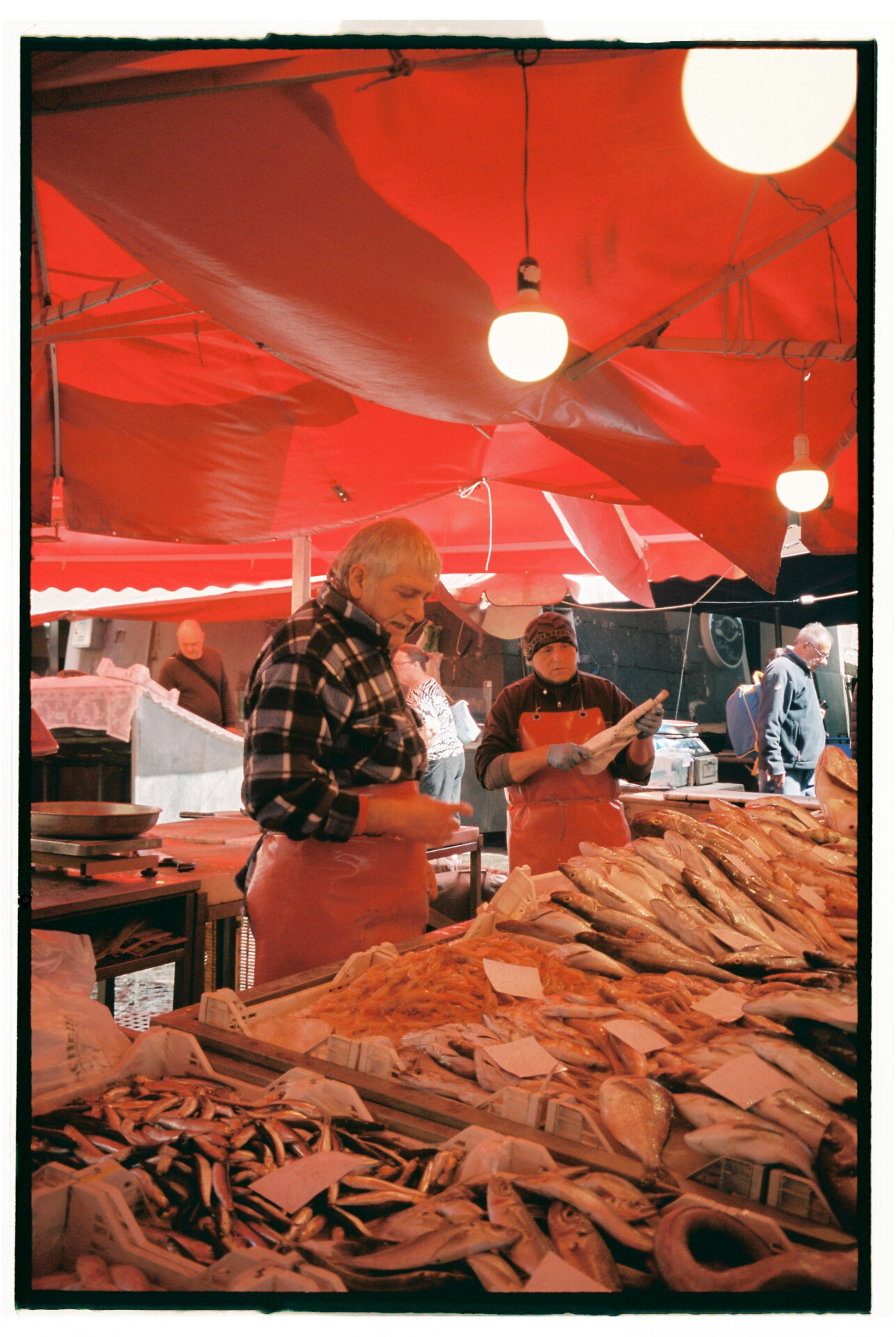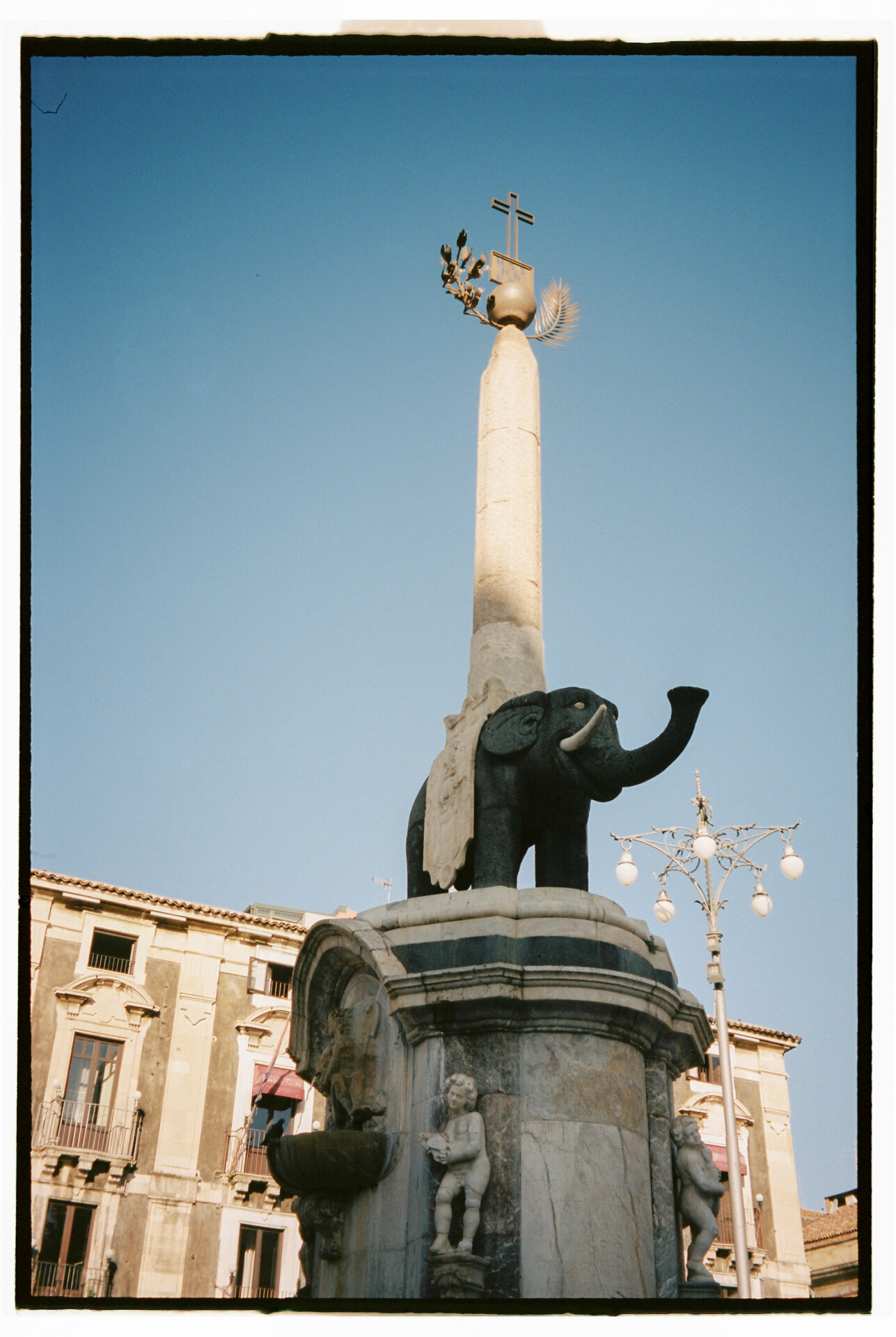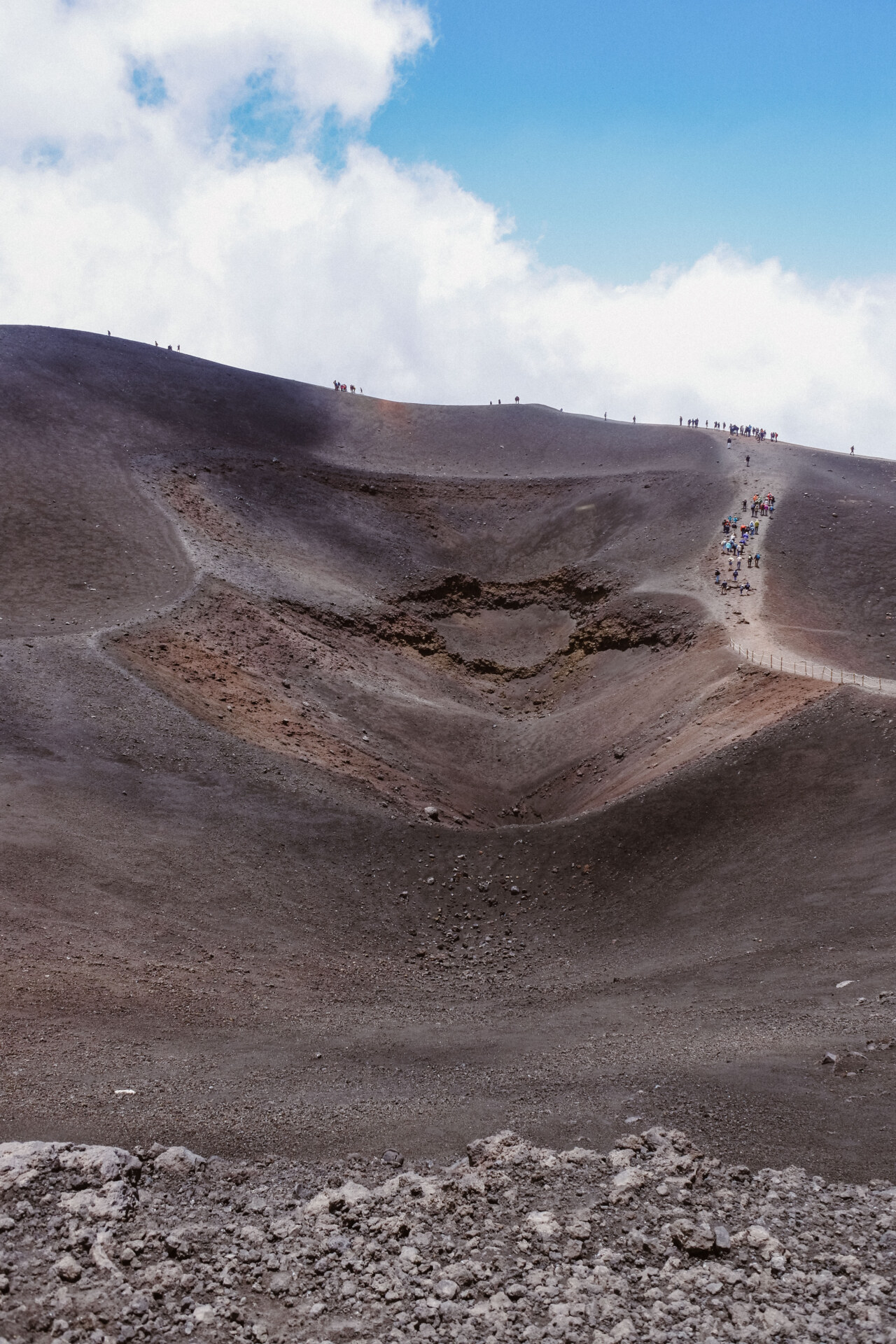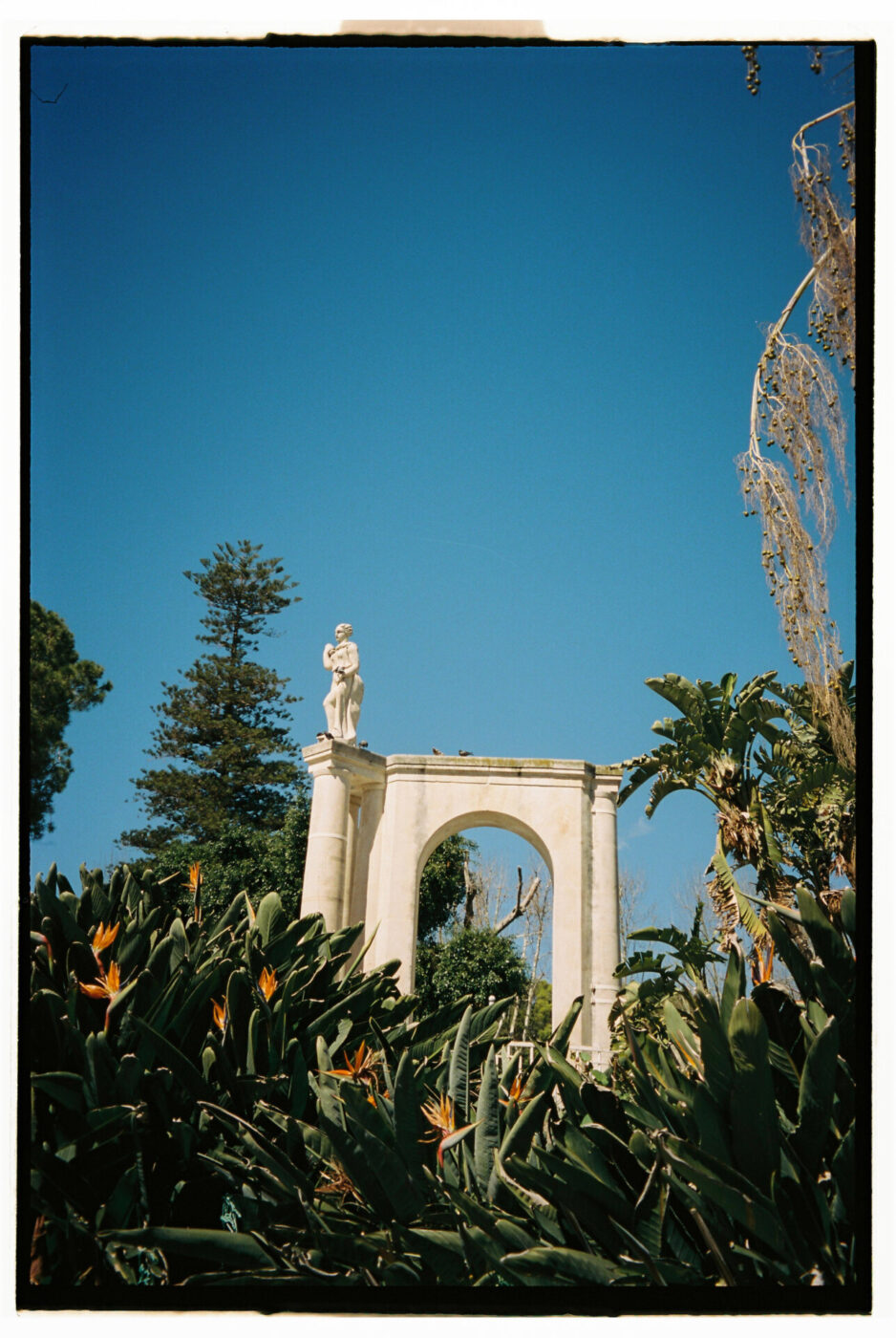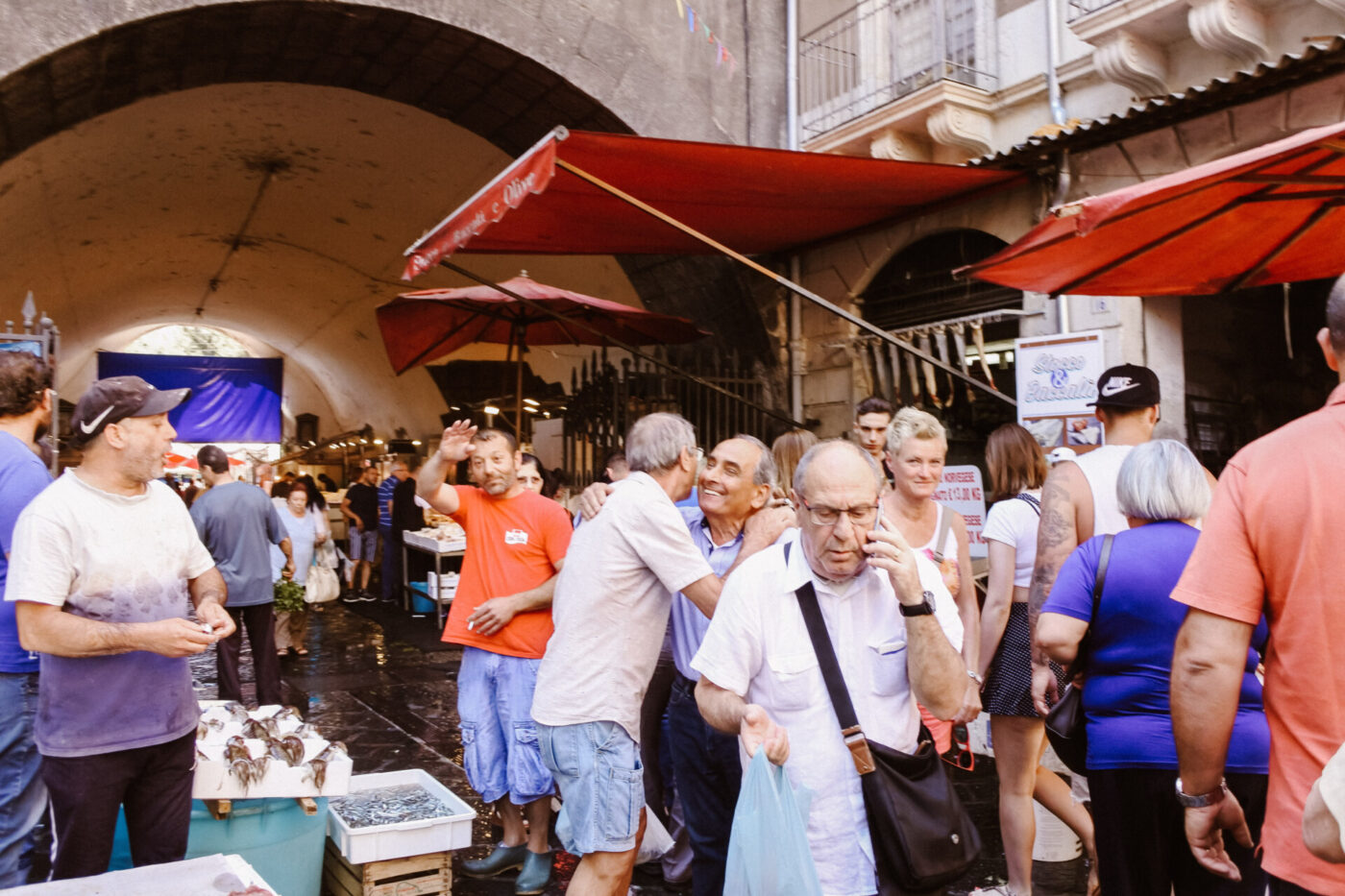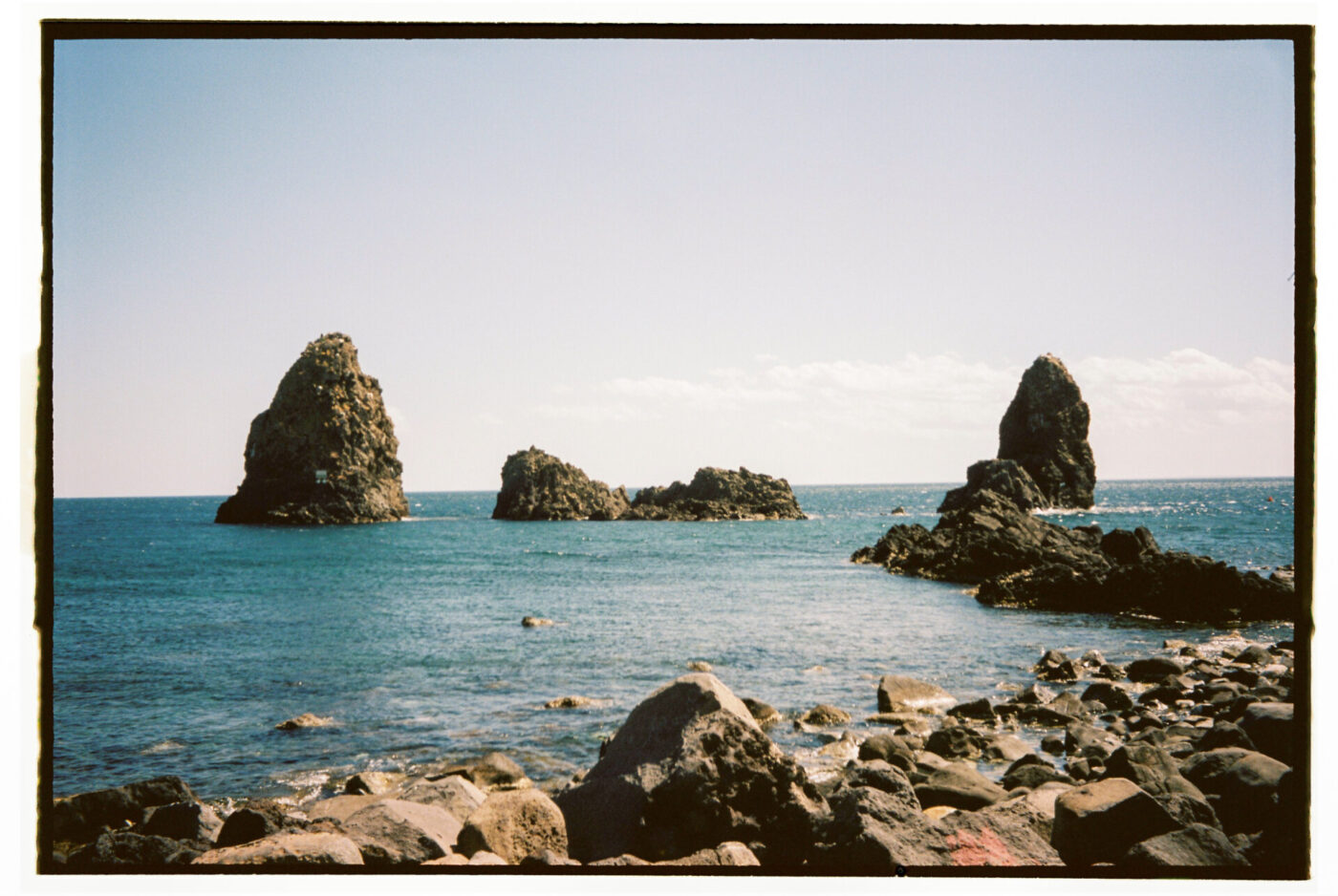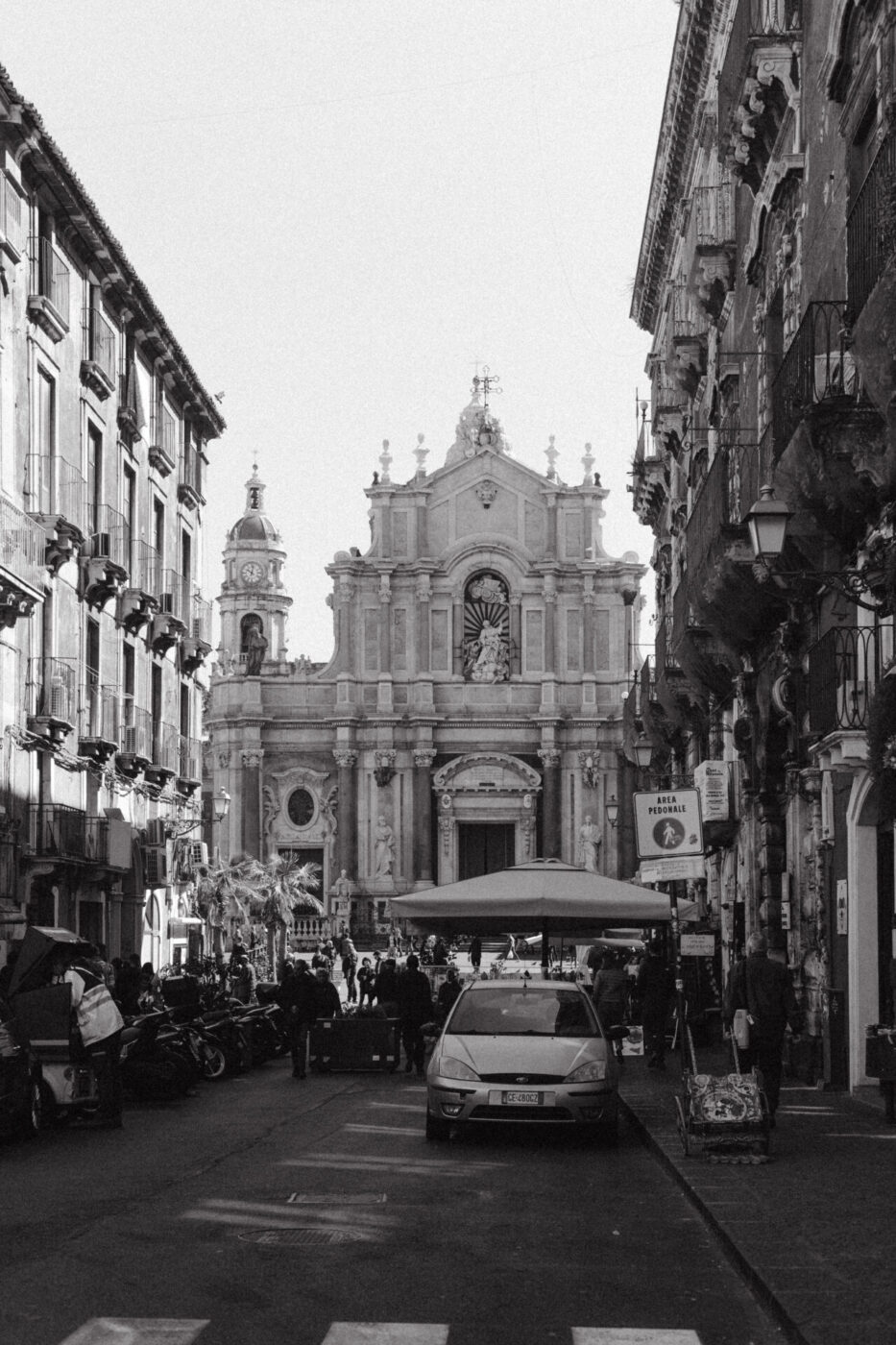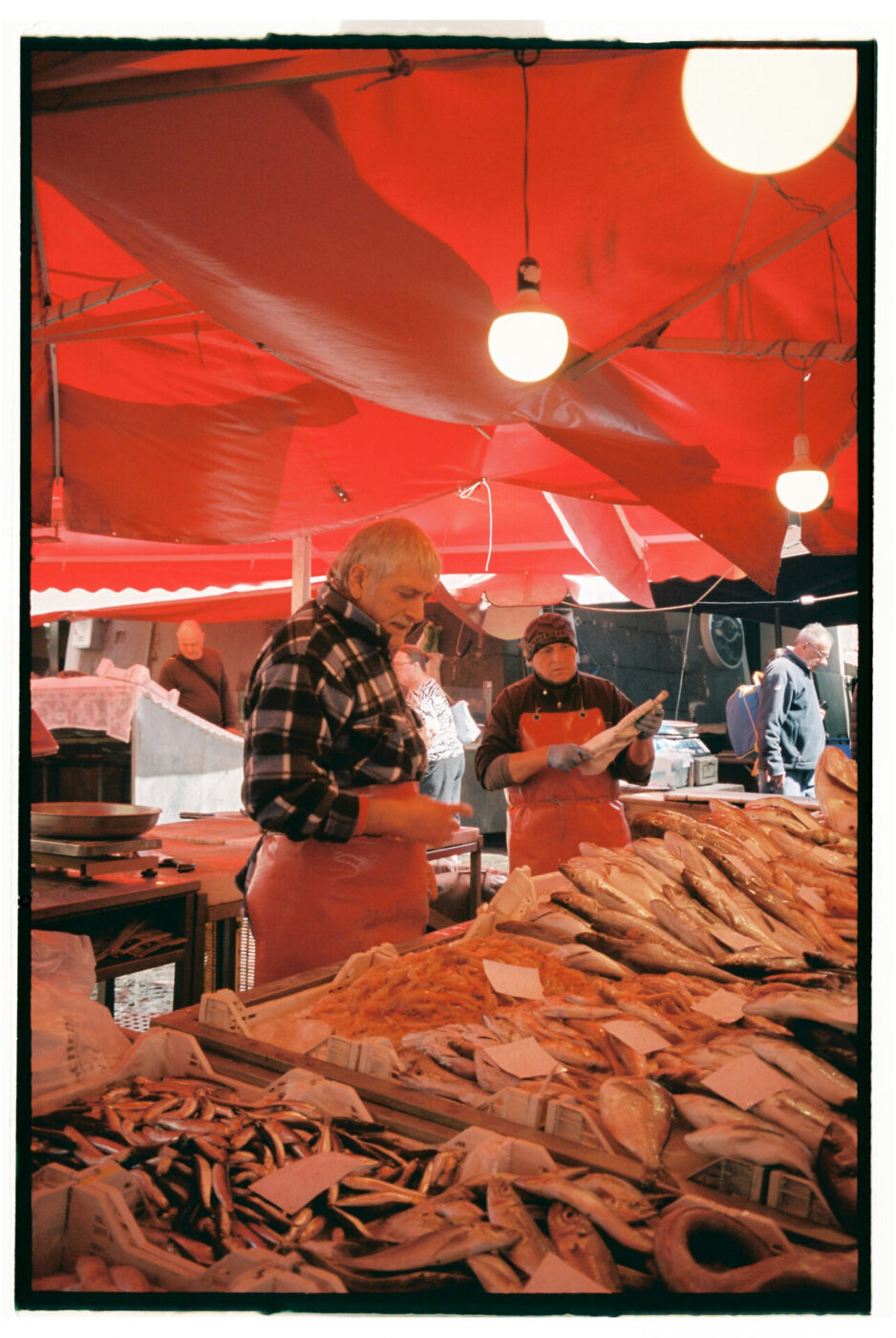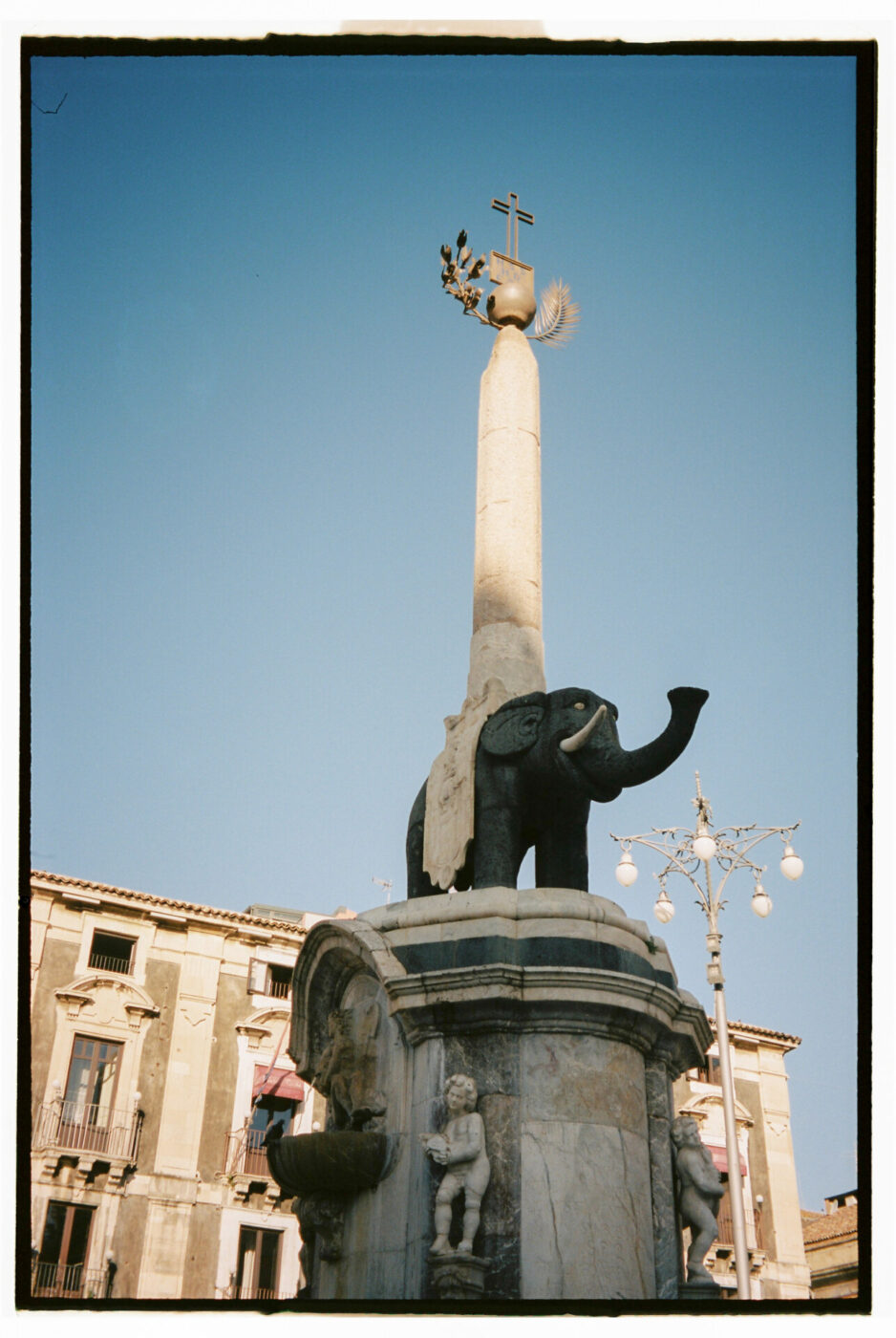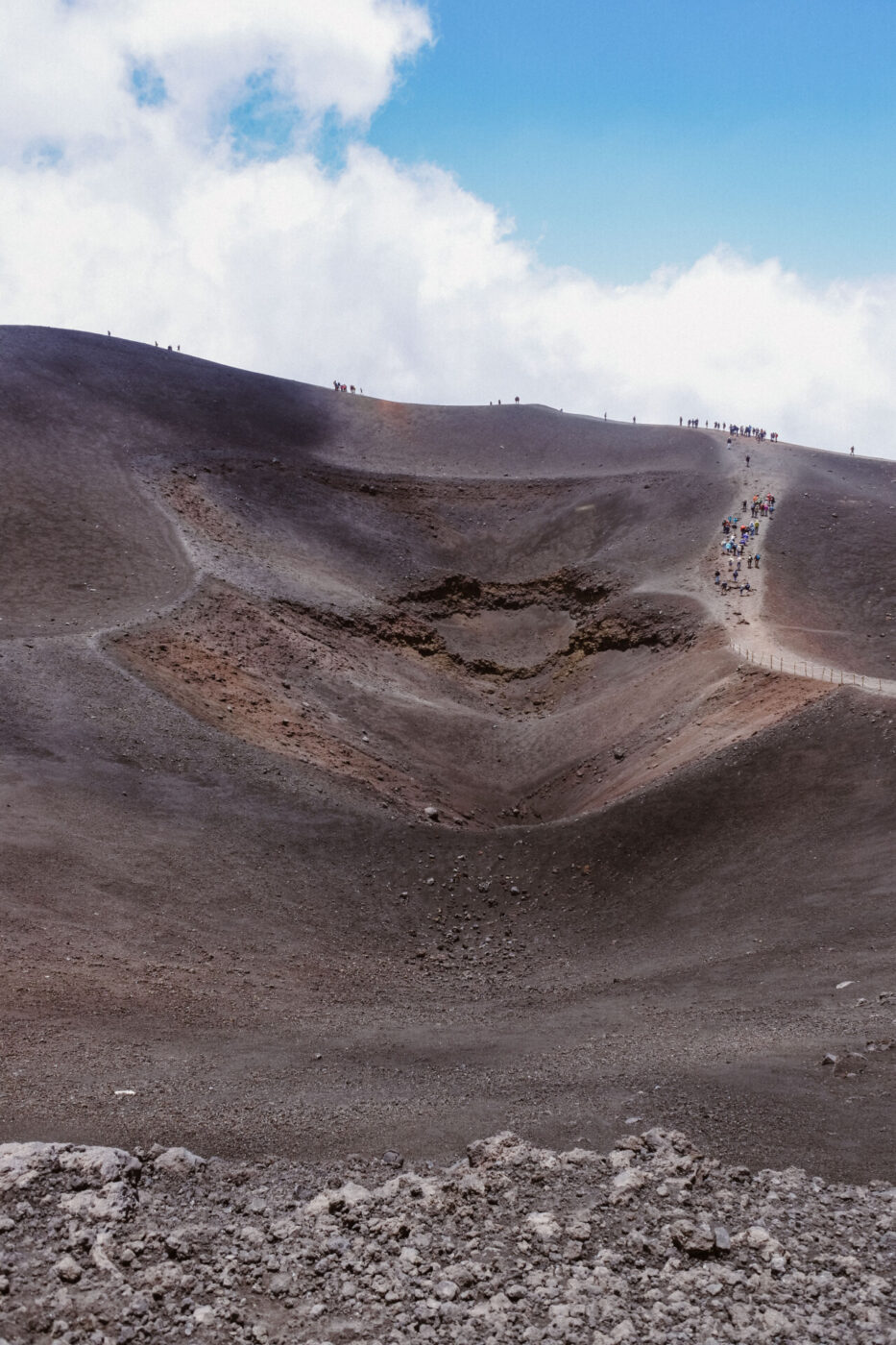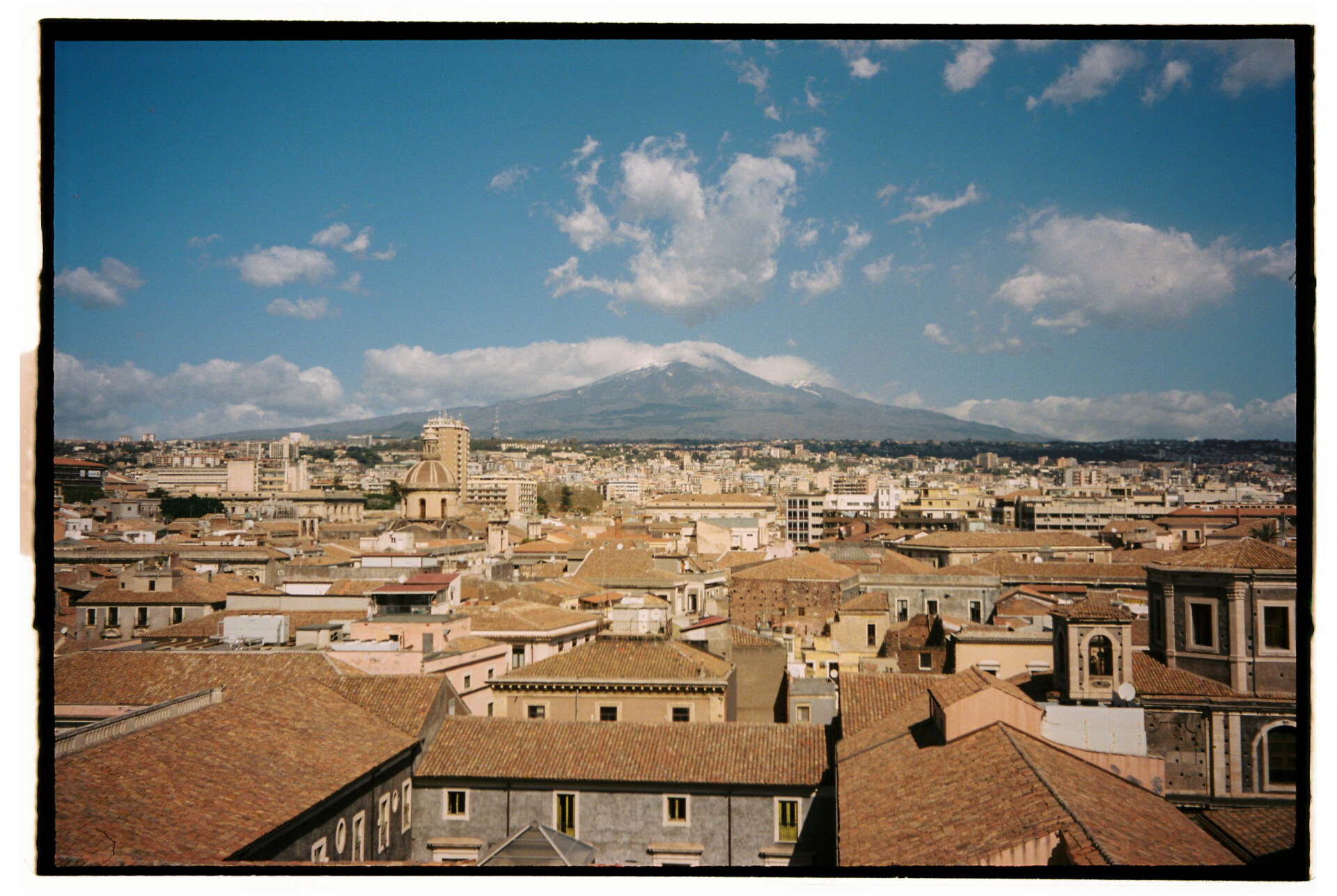
Photography by Gina Spinelli
DAY 1
MORNING
Roman Amphitheater & Odeon – The Roman Amphitheater is Catania’s oldest monument, dating back to the 2nd century AD. It is one of the largest and best-preserved amphitheaters in Italy, with a seating capacity of up to 15,000 people. The structure is even referred to as the “Colosseum of Catania”! The Odeon, built around the same time, was used for smaller theatrical performances and could hold around 1,500 people. To visit these historic sites, visitors can take a guided tour or explore on their own. The entrance to both the Amphitheater and Odeon is located in the Piazza Stesicoro.
Benedictine Monastery – Continue the morning with a visit to this late Sicilian Baroque monastery. A perfect example of architectural integration between eras (a result of the 1693 earthquake that destroyed the structure and the resulting 18th century restoration), the monastery has earned a place on the UNESCO World Heritage List. The monastery has hosted the Astronomical Observatory, several educational institutions and a barracks, and is today the home of the Faculty of Letters and Philosophy of the University of Catania.
LUNCH
Ristorante Vico San Barnabà – In one of the oldest houses in Catania, the Comes family has been serving local, seasonal Sicilian fare since 1990. Dine al fresco on a terrace that overlooks the rooftops of the old city and the Benedictine Monastery, catching the refreshing a’voria, the cool wind that graces the top of the mountains here.
AFTERNOON
Antica Bottega del Puparo dei Fratelli Napoli – The tradition of pupi, 18th-century Sicilian puppets, is deeply rooted in Catania. The puppets, used to tell the chivalric narratives of the Carolingian cycle, live on today in this shop, run by a Catanese puppeteer, at 55 Via Reitano, about an eight minute walk from Ristorante Vico San Barnabà.
Castello Ursino – Just around the corner from the puppet shop is this impressive fortress that stands proudly in the heart of Piazza Federico II of Swabia, a bustling square in the historic center of Catania. Built between 1239 and 1250 at the request of Emperor Frederick II, Castello Ursino was designed by the renowned architect Riccardo da Lentini. The castle has a rich and fascinating history, having been used as a royal residence, a prison, and even a university campus at different times over the centuries. The walls of the castle are adorned with a blend of Christian, Arab, and Jewish symbols, a testament to the peaceful coexistence of various ethnic communities in Catania.
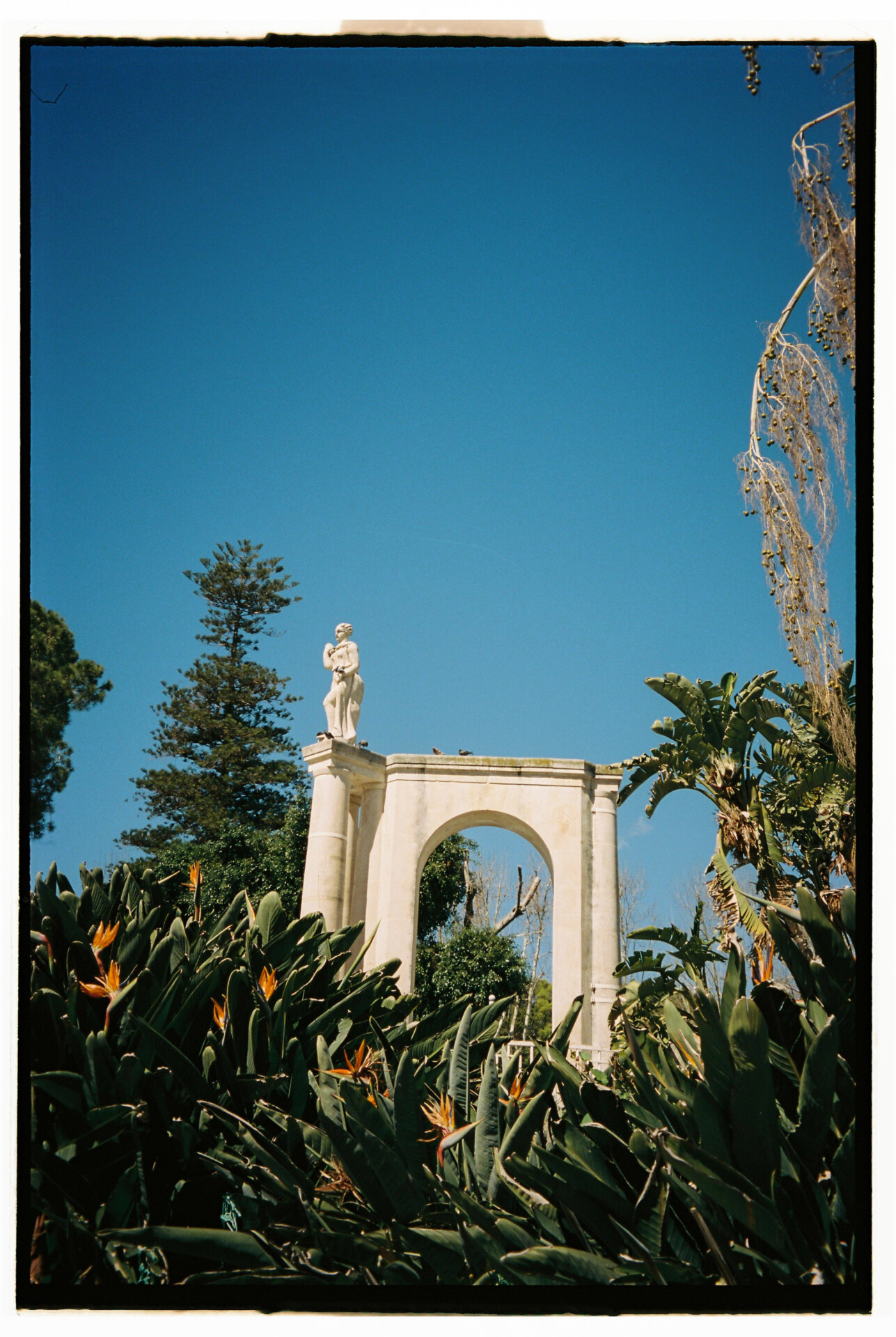
Photography by Gina Spinelli
OUR SECRET
Cartura – Located at Via Passo di Aci 9, Cartura is a haven for those who appreciate the beauty of paper art. Cartura is a creative hub that breathes new life into forgotten objects: from paper sculptures to unique pieces crafted from recycled materials, Cartura is a treasure trove for the environmentally conscious.
APERITIVO
Pamochã – Pa-mo-cha, an acronym for Pane-Mortadella-Champagne, is a fantastic cocktail and champagne bar: choose from more than 200 labels of Champagne, along with a full selection of spirits.
Must Order: Fried eggs with caviar, truffle or sea urchin, charcuterie and cheese boards, sandwiches, oysters and lots of raw seafood.
Alternatively, head to Via Santa Filomena. Called the most gourmet street in Catania, this busy thoroughfare is teeming with restaurants, bars, and clubs.
DINNER
Km.0 – Behind the botanical garden sits a small and simple space dedicated–as the name suggests–to local products. At the helm are two young brothers, one in the kitchen, the other in the dining room, with a strong focus on the seasonality and quality of their raw materials. The menu changes every three months and is adjusted daily according to the market supply, especially with regard to fish and vegetables.
Must Order: With a menu that changes this often, it’s impossible to recommend any one plate. Ask what was picked up at the market that day, and go from there.

Photography by Gina Spinelli
DAY 2
MORNING
Teatro Massimo Bellini – This Neo-Baroque gem is a significant and beautiful landmark of the city. Built in 1870 by Italian architects Andrea Scala and Carlo Sada, the theater was named after the first artist to perform there, Vincenzo Bellini. The theater’s inaugural show was Norma, performed by the renowned local composer on its opening night in 1890. The stage hall features a stunning frescoed ceiling by painter Ernesto Bellandi, depicting Bellini and his famous operas. However, the theater’s most remarkable feature is its exceptional acoustics, as acclaimed by artists like Maria Callas, Luciano Pavarotti, Riccardo Muti, and Renata Scotto. Visiting hours are Tuesday to Saturday mornings and Wednesday to Friday afternoons.
La Piscarìa (Fish Market) – Located near the Fountain of the Seven Canals, just a few meters from Piazza del Duomo, Catania’s historic fish market is the city’s soul and symbol. It’s a vibrant and dynamic place that transforms at every hour of the day, but always feels distinctly Sicilian. Here, you can find stalls brimming with the catch of the day, as well as seasonal fruits and vegetables. You can also grab a refreshing seltzer drink or sample some delicious finger food. It’s the perfect place to get lost in the fishmongers’ tales, anecdotes, and cooking tips. The market’s lively ambiance is not to be missed, and it’s open every day from early morning until mid-afternoon.
LUNCH
Osteria Antica Marina – Located near the historic fish market, the cozy Osteria Antica Marina celebrates the local fresh catch through traditional Sicilian recipes. This small restaurant is the perfect spot to discover the true flavors of the island’s seafood cuisine and has an extensive wine selection.
Must Order: The catch of the day, whatever it is.
AFTERNOON
Palazzo Biscari – Just a few meters away from the restaurant, Palazzo Biscari is the most important private palace in Catania, showcasing the Sicilian Baroque style in its frescoed halls. It’s a versatile venue for concerts, meetings, receptions, galas, and fashion shows. Construction began in 1702 and lasted over a century, involving renowned architects, carvers, and decorators. Visitors can take a tour of the palace, which includes the history of the Baroque masterpieces and scandalous stories of Catania’s nobility from the 1700s-1900s. Reservations for tours are recommended.
Fun Fact: You may also recognize the steps of the main facade from Coldplay’s “Violet Hill” music video.
Piazza Università – Piazza Università is a lively and significant location in the city, with a rich history and folklore. The square is adorned with bronze lamp posts that depict folk tales such as the story of Gammazita, Cola Pesce, Anfinomo, Anapia, and the legend of Uzeta, the hero who freed the city from giants. What makes this square unique is the view of Mount Etna on one side, the Cathedral of St. Agatha on the other, and the statue of u liotru, or Elephant Fountain, on the third. The latter is a famous, 18th-century structure composed of a lava stone elephant topped with a granite obelisk. This symbol is considered a good luck charm for the city and its name is believed to derive from Heliodorus, a magician who fascinated the Catanese with his enchantments.
Cathedral of St. Agatha – The cathedral, named after the city’s patron saint, was rebuilt in 1711 by architect Giacomo Palazzotto after the original Norman structure was destroyed in the 1693 earthquake. The magnificent Baroque facade, a unique combination of black lava stone and clear Syracuse limestone, was designed by Giovan Battista Vaccarini. Next to the cathedral, the Abbey Church of Sant’Agata has a hidden gem: a terrace with a view of the city, Mount Etna, and the sea, which can be reached by climbing the dome.
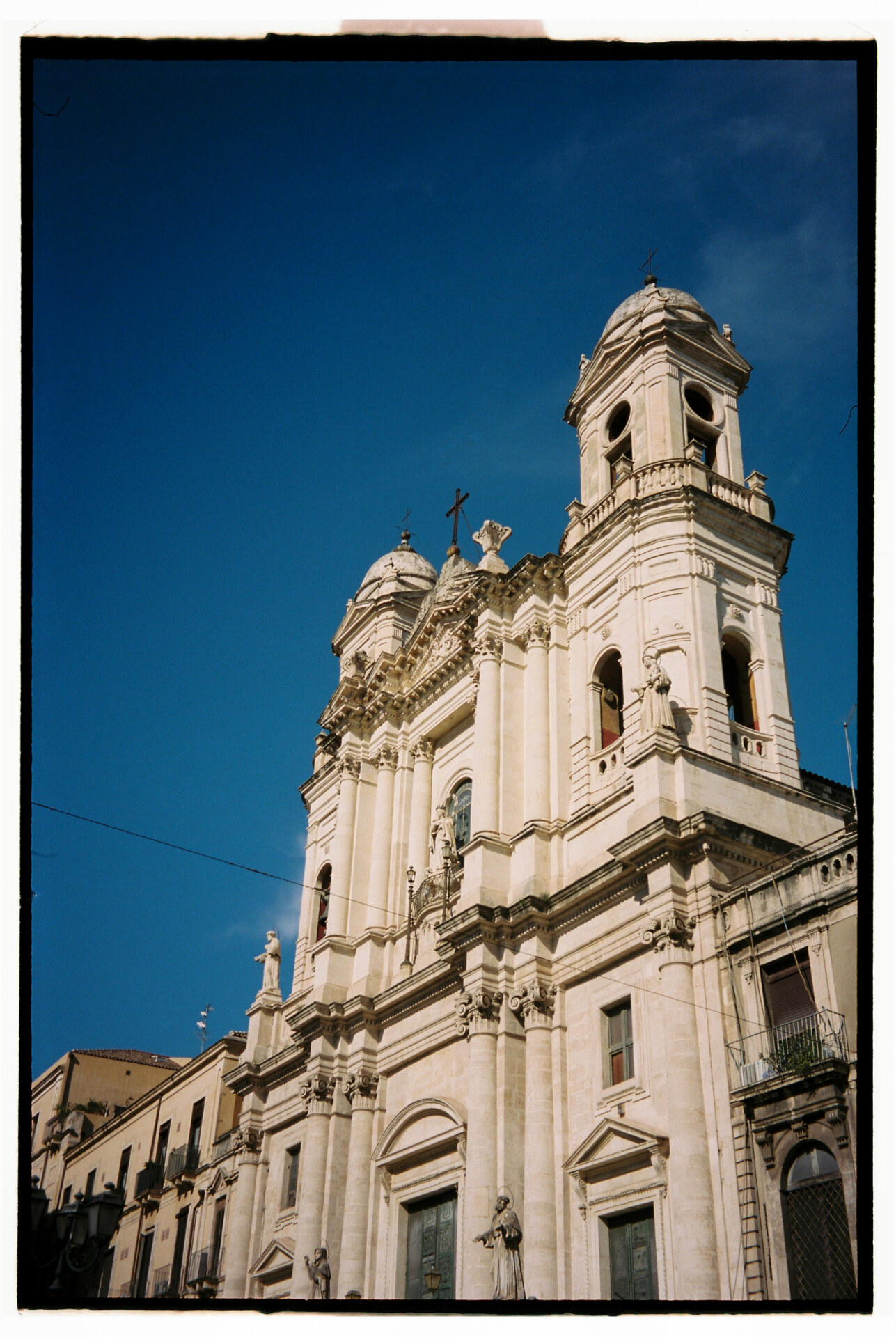
Photography by Gina Spinelli
LATER
The best way to get to know a city–besides visiting its most important monuments–is to wander the streets.
San Berillo – Once Catania’s red light district, this lively neighborhood has undergone recent redevelopment. Still on the verge of gentrification, the atmosphere now oscillates between dilapidation and a desire for change, and promises true local Catanian character.
Via Crociferi – Counted as one of the most beautiful streets in Italy, Via Crociferi is adorned with several Baroque churches, and the Arch of San Benedetto in this area is famous for one of Catania’s most popular legends. During the 18th century, a headless horse was said to be roaming the area and attacking passersby, creating fear among the locals. In reality, it was a story fabricated by the nobles to keep people away while they conducted shady business.
OUR SECRET
Boudoir 36 – Don’t miss this artisanal perfumery housing a well-researched and curated selection of brands that you’ll rarely find elsewhere.
APERITIVO
Razmataz – A casual, all-day dining spot with updated versions of Sicilian classics and a fantastic wine list.
Must Order: Local wines, the gazpacho with avocado and croutons, and the vegetable tart with onion cream and tuma (a typical Sicilian cheese).
DINNER
Mé Cumpari Turiddu – Roberta Capizzi’s restaurant in Catania’s historic center offers a mix of traditional and modern Sicilian cuisine with high-quality ingredients sourced from Slow Food Presidia. The cellar includes over 200 Sicilian wines and 60 spirits, and Roberta’s garden supplies the kitchen with fresh vegetables and citrus fruits for homemade jams. Ask sommelier Giovanni for help selecting a wine!
Must Order: Spaghetti alla Turiddu with anchovies and toasted breadcrumbs, maccheroncini alla Norma, Messina style meat chops, or albacore tuna with onion.
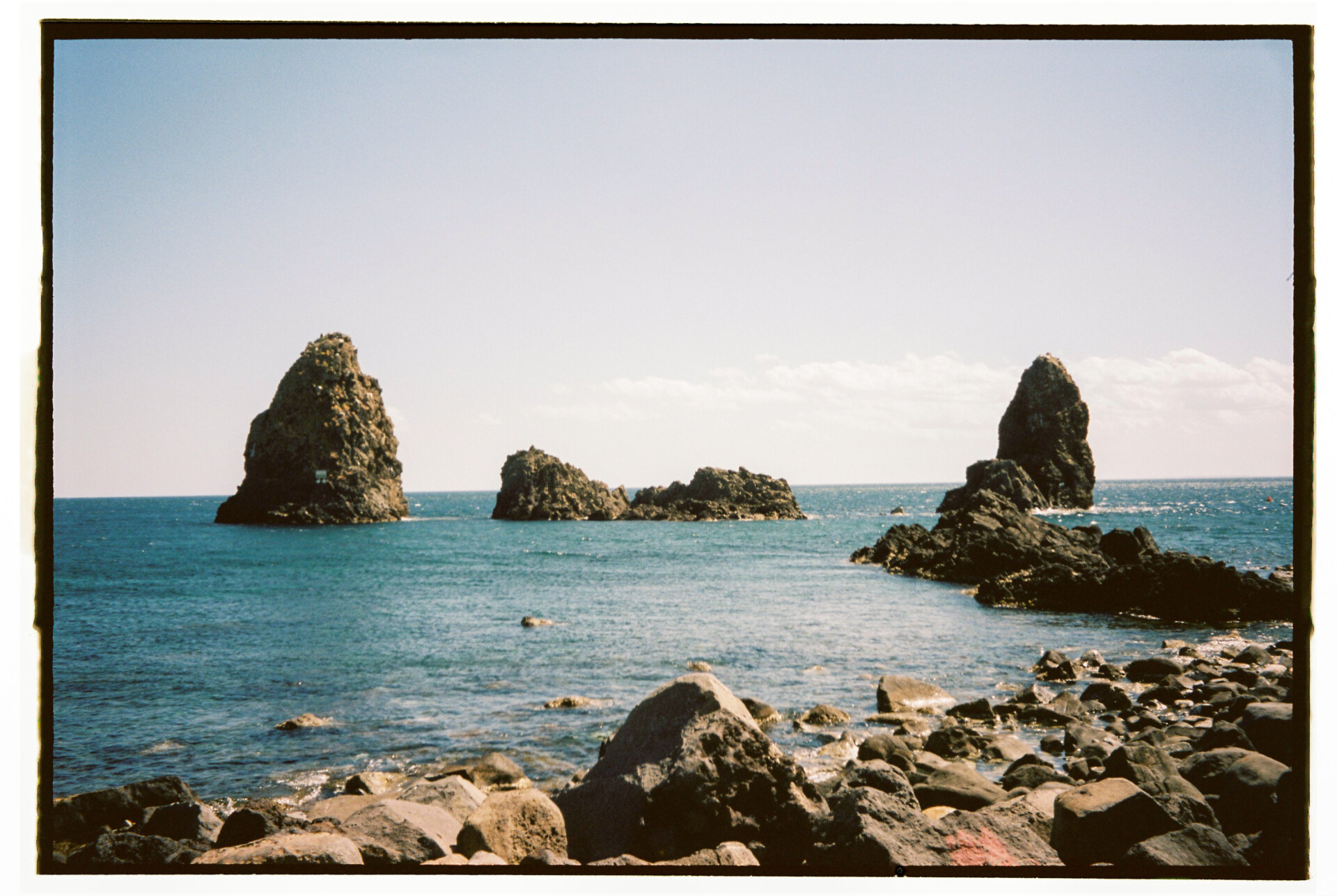
Photography by Gina Spinelli
WHERE TO SLEEP
Palazzo Scammacca – A renovated 1800s building in Catania’s historic center, offering seven apartments and three double rooms, each with a unique style. It’s a short walk from Piazza Duomo and the city’s colorful markets.
Asmundo di Gisira – Art Market Living Boutique – Asmundo di Gisira is in the heart of the historic district, near Piazza Duomo, surrounded by beautiful Baroque architecture. Thoughtfully curated rooms blend classic Italian furniture from the 30s and 60s with stucco or frescoed ceilings and other unique elements from the past, creating an eclectic atmosphere.
Liberty Hotel – An early 20th-century Art Nouveau villa with luxurious rooms, located a five-minute walk from Catania University and 1.2 km from the Bellini Theatre. The rooms are stylishly furnished, with mosaic marble bathrooms and some with decorated ceilings. The hotel has original touches and an eye for details, giving the whole environment a strong personality and warmth.
BONUS: A FEW MORE SECRETS
A Putìa dell’Ostello – Catania’s most cosmopolitan spot for eating, drinking, and socializing. In the basement, there’s a lava cave created from Etna’s 1669 eruption, with the silent flow of the Amenano River. Here, one can find a varied menu that includes Sicilian and Mediterranean dishes, as well as Japanese-Brazilian sushi. It’s best to book in advance for a chance to dine inside the restaurant’s cave next to the underground river.
La Fera ‘o luni – Piscaria is not the only fish market worth a visit! This market in Piazza Carlo Alberto is a fantastic place to explore the vaster culinary culture of the city.
The surroundings of Catania – Catania’s waterfront extends to two charming seaside towns in the Etnean territory, Aci Castello and Aci Trezza, where the “three stacks” can be admired. Legend has it that the Cyclopes who threw three giant boulders at Ulysses in this part of the sea, according to Homer’s story, resided here. Aci Trezza is also the setting of Giovanni Verga’s famous novel, the Malavoglias, which portrays the ancient Trezza.
Explore the towns on Mount Etna’s slopes: from Nicolosi, you can access the Rifugio Sapienza, where an excursion to the summit craters can be arranged. Zafferana Etnea, Trecastagni, and Milo are other great places to visit; the latter hosts Vinimilo, a festival dedicated to Etna wines, occurring annually in September. In Sant’Alfio, the Centocavalli Chestnut, considered Europe’s oldest tree by botanists, can be found.

